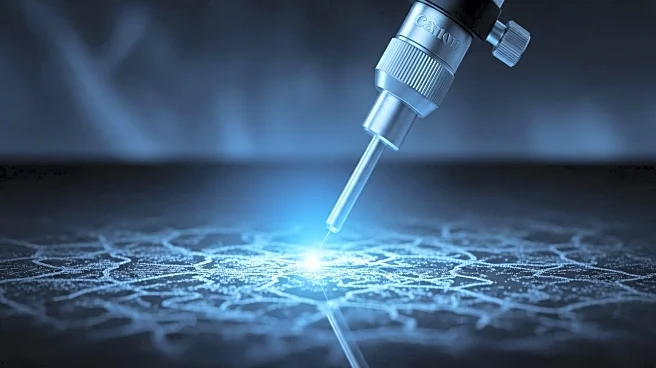What's Happening?
Recent developments in thermal scanning-probe lithography (tSPL) have enabled precise mapping and fabrication of nanoscale topographic landscapes. This advanced scanning probe microscopy technique uses a silicon tip on a heated cantilever to sculpt polymer films with nanometer precision. The smooth topographic landscapes created by tSPL allow for the fabrication of mathematically defined contours, enhancing functionalities in photonic, electronic, chemical, and biological technologies. An open-source software package, FunFit, has been introduced to fit analytical functions to scanning probe microscopy data, improving analysis and reproducibility. This approach facilitates the patterning of periodic and quasi-periodic landscapes in polymer resist, which can be transferred to hexagonal boron nitride flakes with high fidelity.
Why It's Important?
The advancements in thermal scanning-probe lithography represent a significant leap in nanotechnology, offering enhanced capabilities for fabricating and analyzing nanoscale structures. This technology is crucial for the development of next-generation photonic and electronic devices, potentially leading to breakthroughs in various scientific and industrial applications. The introduction of the FunFit software package addresses a critical gap in data analysis, enabling more accurate and reproducible results. Researchers and industries involved in nanotechnology stand to benefit from these developments, as they provide new tools for innovation and efficiency in material science and engineering.











